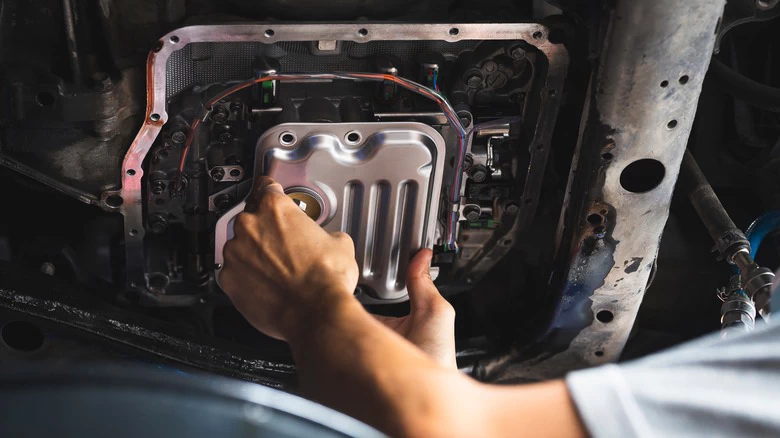Automatic transmission maintenance
Tips for maintaining an automatic transmission
Published: 2025-05-19 08:37:51
Last edited: 2025-05-19 08:37:51
Author: Administrator

Changing the oil and filter of automatic transmissions
The transmission oil and its filter must be changed at certain times. In the transmission service, just changing the oil is not enough, and the transmission case must be opened and the filter must be changed or washed, (some filters, especially the wire type, are washable). Taking care of the filter is very important. Because a clogged filter causes less oil flow and severe damage, and often causes the transmission to burn out. Some of the top models of modern transmissions, such as Peugeot 206, Hyundai, Kia, have the filter installed inside the transmission, or in other words, they are disposable transmissions because the life of the transmission ends when the filter becomes dirty and clogged. Therefore, the accuracy of changing the oil on time in these transmissions can practically extend the life of the transmission. The time for changing the transmission oil is specified in the car manual, and depending on the manufacturer, this period ranges from 20,000 km to 60,000 km.
But keep in mind that the cause of automatic transmission failure is excessive heat, and the main cause of heat is, first of all, heavy traffic, especially in big cities and the climatic conditions of Iran. With our long experience in this matter, we recommend every twenty thousand kilometers relatively and we consider the recommendations of car manufacturers to be more in line with the traffic mentality and conditions of American and European countries. And we must add that gearbox service seems to be a simple task, but it must be done by a gearbox specialist because if you use fake or spoiled oil, the wrong type of oil, the wrong oil level, especially low oil, or use poor quality gaskets (which cause oil leakage and oil loss), it can have costly consequences.
How to check automatic transmission fluid (cars with dipstick)
The car must be warm. To do this, start the engine and let it run for 10 to 15 minutes. While the gear is in P, pull out the dipstick. After cleaning it, insert the dipstick all the way in and pull it out. The oil should be visible up to the second upper line of the dipstick. Now, apply the oil to the oil side of the dipstick with your finger. The oil color should be clear and cherry-colored, otherwise it needs to be replaced. In cars that do not have a dipstick, you should visit a specialist to ensure the condition of the transmission oil, and the ideal time for this is every 5,000 km and a maximum of 10,000 km.
What to do when your car gets stuck in mud or snow?
If your car gets stuck in a hole, mud, or heavy snow, if you can't get out of this situation after one or two attempts, don't continue doing so because it will cause the clutches to overheat and destroy the automatic transmission. At this time, get your car out of this situation with the help of people or another device. When people help, the car can be in gear, but it must be released in one movement.
At red lights and short stops
Generally, there is no need to exit drive mode during short stops of less than two minutes. When the transmission is in drive mode and you hold the brake, only a small bearing is rotating. However, when you shift the gear to park, the entire electronic and mechanical system comes into play and takes the transmission out of drive mode. When you shift the gear back to drive mode, all the electronic and mechanical systems come into play again to return the transmission to drive mode.
Important notes:
1- Do not shift the gear lever while driving, even to neutral. In general, you cannot shift the gear while driving, except when entering tiptronic mode.
2- One of the most common abuses with automatic transmissions is shifting into neutral on downhill slopes. Shifting the automatic transmission down a hill will not reduce your car's fuel consumption. More advanced automatic transmission cars are smart enough to reduce fuel delivery to the engine when going downhill, reducing fuel consumption.
3-Never select Drive mode when accelerating for more initial acceleration. Holding the accelerator pedal in neutral and then selecting D to start can cause irreparable damage to your car's automatic transmission.
4-Do not engage P (Park) mode before the car has come to a complete stop. Most new automatic transmission cars do not allow you to select Park while driving, but if your car does not have this feature, it is your responsibility to shift into Park after coming to a complete stop while your foot is still on the brake.
